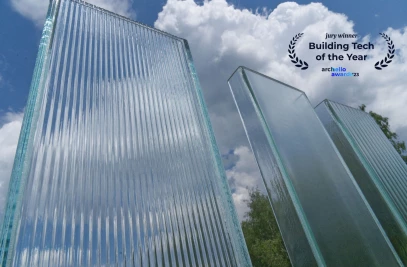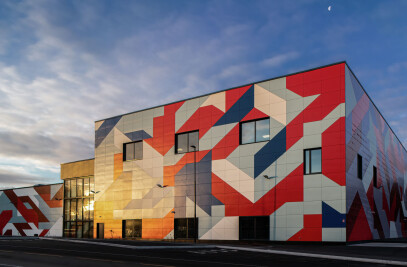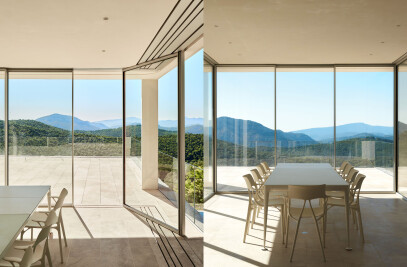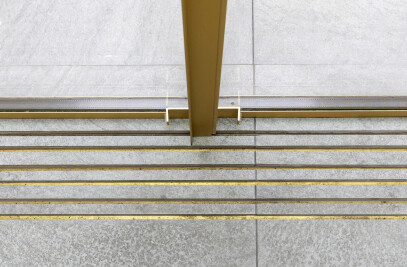Situated on a deep and narrow lot, the house appeared in its existing state to be uninspiring but began to reveal some interesting elements. Stripped to essentials, the floor plan revealed the basic shape of one and a half squares By mirroring this shape, you get three squares, with a fireplace in the centre, giving the architects, Graux & Bayens, a central organizing feature to work with.

To provide ceiling support for the square spaces, steel structural beams painted white were introduced, allowing for large, open plan living spaces.

Rather than integrating the entrance, storage room and toilet into the concept of the three squares as often happens in a new building, these spaces were placed in the original annexe. This move respects typical Flemish building context, which is known for its extensions and additions.

On the south side of the house, a sense of spaciousness was created in the living room with the inclusion of a large glass wall and windows positioned somewhat recessed. The adjacent patio is delineated by a wall of the original outbuilding with the same window openings as the existing house.

The design opens up the antechamber and at the same time creates a buffer for adjacent living space. This intervention results in a fascinating interaction not only between the living room and strip of garden at the side but also between the dining room and the bedroom.

The interior high ceilings were deliberately left rough and unfinished, an aesthetic also applied to the structural walls, which were painted with Kalei stucco.

































